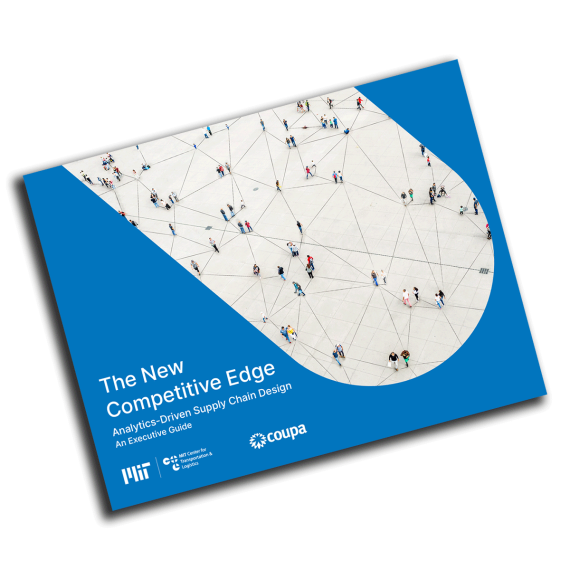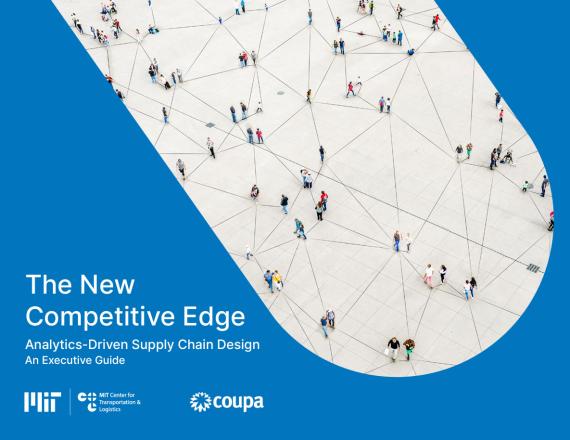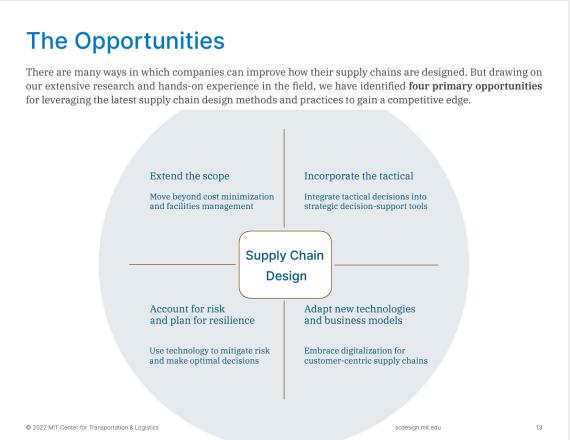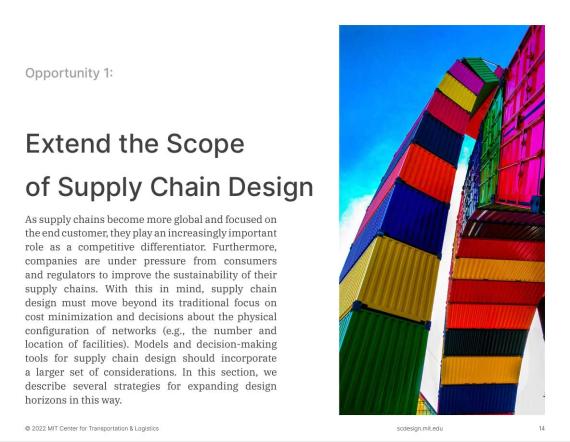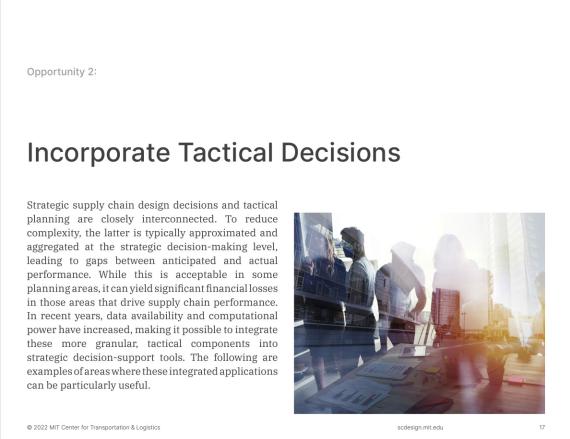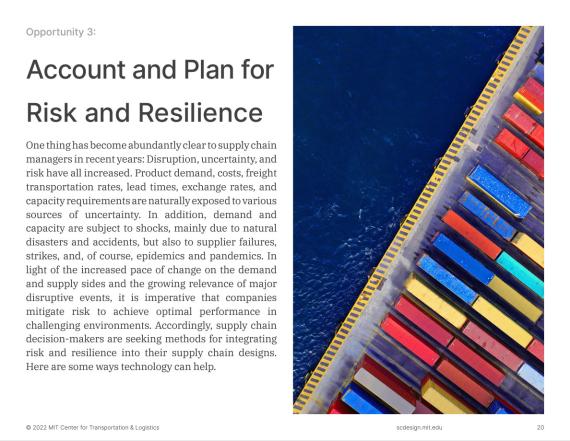
Analytics-Driven Supply Chain Design: The New Competitive Edge
Find out how to boost operational efficiency and gain a competitive edge by implementing the newest tools and practices for supply chain design.
In conjunction with the Massachusetts Institute of Technology’s Center for Transportation & Logistics (MIT CTL), we wrote this executive guide to present approaches to developing supply chains that are resilient because they are driven by real-time analytics.
Learn how to:
- Broaden the design for your supply chain
- Implement tactical decisions into supply chain planning
- Maximize resilience and minimize risk
- Quickly evolve as technologies emerge and business needs change.
As the world's supply networks evolve and reach new levels of complexity, companies are adopting new technologies and methods to minimize risk, adapt quickly to new circumstances, and ease the impact on the environment. This guide will help you understand new supply chain design technologies and how companies are using analytics-driven methods to improve the resilience and sustainability of their supply chains while mitigating risk.
FAQ
2. The second opportunity is to integrate more granular, tactical components into strategic decision-support tools to reduce gaps between anticipated and actual performance of supply chain networks. This is relevant to a number of tactical planning areas, such as source optimization, production planning, inventory decisions, and transportation planning.
3. The third opportunity is to put greater emphasis on the consideration of various sources of risk and uncertainty in supply chain design and structurally incorporating risk-mitigation and resilience measures into analytical decision-making support tools.
4. The fourth opportunity is to embrace new design methods and practices that incorporate new technologies and business models, supporting the design of digitally enabled, customer-centric supply chains that are both flexible and profitable.
For more details on these opportunities, please download the "The New Competitive Edge: Analytics-Driven Supply Chain Design, An Executive Guide."
So much is changing in the commercial environment where today’s supply chains compete. Global supply chains are becoming increasingly complex. The number of actors involved is increasing, consumer expectations are rising, and industry trends such as the growth of omnichannel marketing and direct-to-consumer services are redefining supply chains, especially over the last mile.
As a result, tactics for managing and mitigating risk, building resilience, and supporting sustainability now play a more important role in the design of supply chain networks than was the case just a decade ago. From a strategic perspective, supply chain design has become a major source of competitive advantage. But to capitalize on this advantage, companies must adopt and implement design practices that meet the demands of today’s competitive environment.
As markets and technology continue to evolve at a rapid pace, traditional supply chain design methods have become outdated, and companies that follow them risk putting themselves at a competitive disadvantage. The challenge for supply chain leaders, therefore, is not just to respond to market developments; they must also acquire the tools and flexibility to keep up with the accelerating speed of change.
MIT CTL and Coupa have combined the knowledge and experience gained from state-of-the-art academic research and many hours working with companies to establish a vision for future-proof, analytics-driven supply chain design and planning approaches. This vision is elucidated in the following paper. We present an overview of the current state of practice in supply chain design and offer specific strategies—supported by real-world examples—for putting our vision into practice.
The speed with which disruptions upended operations made it painfully clear that successful supply chains must be flexible and adaptable. But being able to quickly respond to changing markets and competitive priorities is not solely a pandemic-era concern. Increasing supply chain complexity, the exponential growth of e-commerce and omnichannel fulfillment, and the mandate for sustainability are not new, but successfully managing them requires similar capabilities.
For all these reasons and more, traditional supply chain designs and methodologies have become outdated, creating risk for today’s businesses. To model a new world, you need new thinking and new tools. We hope this timely paper will help you to reconsider and reshape your network design strategy at a time when it’s never been more important.
